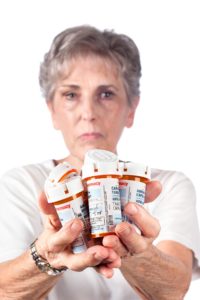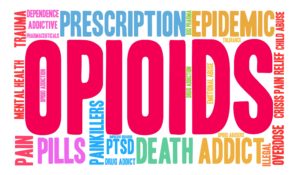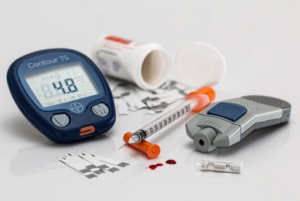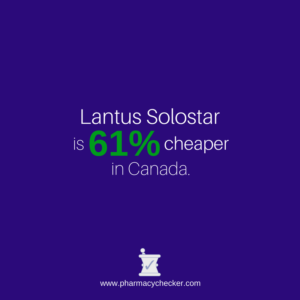by Gabriel Levitt, President, PharmacyChecker.com and Prescription Justice | Sep 13, 2017 | Drug Prices
 At the beginning of this year, Prescription Justice, the non-profit organization I founded, released an analysis showing that about 45 million Americans did not fill a prescription in 2016 due to cost. We derived that figure by looking at 2016 survey data by the Commonwealth Fund, a research organization dedicated to healthcare policy. Its international survey showed that 18% of the adult population in the U.S. did not fill a prescription due to cost. The UK’s rate was nine times lower at 2%.
At the beginning of this year, Prescription Justice, the non-profit organization I founded, released an analysis showing that about 45 million Americans did not fill a prescription in 2016 due to cost. We derived that figure by looking at 2016 survey data by the Commonwealth Fund, a research organization dedicated to healthcare policy. Its international survey showed that 18% of the adult population in the U.S. did not fill a prescription due to cost. The UK’s rate was nine times lower at 2%.
Last week, I came across new information that showed about six million Americans of Medicare age were included among the 45 million. A new cross-sectional study of Commonwealth Fund international survey data from 2014 shows the percentage of older adults, 55 and up, that do not take medication because of drug prices. People in 11 high-income countries—22,532 overall—were asked if they had gone without prescribed medications in the past year because of cost.
In the U.S., 16.8% of 1593 people said yes.
For those 65 and older the percentage was 12%.
U.S. Census data from July of 2016 shows that there are about 48 million Americans 65 and older.
That means 5.8 million Americans, 65 and older, forgo taking their meds due to cost.
For international comparison: the percentage of older people skipping medications due to prices in the UK was 3.1%. In France, it was only 1.6%.
Sadly, it was quite high in Canada and Australia: 8.3%, and 6.8%, respectively.
The academic, medical term for such medication skipping because of prices is called cost-related nonadherence (CRNA). It’s a serious public health issue, one in which Americans end up getting sicker, going to the emergency room, or dead solely because they can’t pay for medications. As we move into the season when Medicare beneficiaries pick Part D plans, we’ll continue to look at how our oldest citizens are affected by high drug prices. But it’s clear that Medicare pharmacy benefits are falling far short of what is needed. While price should not block ANYONE from essential medications, the fact that so many millions of our oldest citizens who need their prescribed meds the most are forced to go without is disgusting.
Tagged with: Commonwealth Fund, CRNA, older americans
by Gabriel Levitt, President, PharmacyChecker.com and Prescription Justice | Sep 8, 2017 | Controlled Drugs
 The Internet is the last place Americans look to when they want to get high on prescription narcotics, according to government data. One-tenth of 1% (.1%) of Americans who obtain prescription opioids for non-medical purposes (to “get high”) say that they obtain them over the Internet.
The Internet is the last place Americans look to when they want to get high on prescription narcotics, according to government data. One-tenth of 1% (.1%) of Americans who obtain prescription opioids for non-medical purposes (to “get high”) say that they obtain them over the Internet.
This data is based on the latest survey, published in 2015, by the Substance Abuse and Mental Health Services Administration (SAMHSA), which is part of the Department of Health and Human Services. Compare that to the main channels people use for prescription opiates for getting high:
50.5% from friends
22.1% from their doctors
10.9% buy them from friends
4.8% from a drug deal or other stranger
4.4% took or stole it from a friend
3.1% from more than one doctor
0.4% stole from a doctor’s office, hospital or clinic
3.6% some other way not asked in the survey
This information is important to the community of companies, organizations and consumers that support online access to safe, affordable medication and personal drug importation. Groups funded by the pharmaceutical industry use the tragedy that is the opioid crisis in America to oppose legislation and regulations that would otherwise help more Americans safely import lower-cost medication. They do so by naming the Internet the culprit for the epidemic. The data indicates that this blame is seriously misplaced. (more…)
Tagged with: opioid epidemic, SAMSHA
by Lucia Mueller, President, PharmacyChecker.com | Sep 1, 2017 | Drug Importation
 With insulin prices skyrocketing, no wonder the diabetic community is taking to social media to network and share their experiences as they swap tips and tricks not only for moral support, but also financial.
With insulin prices skyrocketing, no wonder the diabetic community is taking to social media to network and share their experiences as they swap tips and tricks not only for moral support, but also financial.
This month, we received an interesting consumer comment via our Facebook page asking if we knew that Americans are driving to Canada to buy insulin without a prescription. Well, no. As our primary focus is mail-order pharmacy, it wasn’t on our radar. Nevertheless, it sparked our interest and we’d like to share our findings with the PharmacyChecker community.
 After calling 20 pharmacies across Canada (specifically in the following cities: Québec City, Toronto, Alberta, Victoria, Winnipeg and Regina) the answer is clear: Americans can obtain insulin without a prescription in Canada. All pharmacists that I called reported—rather matter-of-factly—that you do not need a prescription for any insulin product, which would include Lantus Solostar, Humalog and Levemir. We specifically talked about Lantus Solostar, a popular, long-acting insulin. The price in Canada for a three-month supply of Lantus Solostar (3 ml) is currently around $447.00 while the average retail price in the U.S. is a staggering $1,160.39. Apparently, they practice what they preach: all patients—including Americans—do not need a prescription to obtain insulin in Canada. While a prescription is not needed, the drugs are available only from the pharmacist and must be retained within an area of the pharmacy where there is no public access and no opportunity for patient self-selection (also known in the U.S. as Behind the Counter (BTC).
After calling 20 pharmacies across Canada (specifically in the following cities: Québec City, Toronto, Alberta, Victoria, Winnipeg and Regina) the answer is clear: Americans can obtain insulin without a prescription in Canada. All pharmacists that I called reported—rather matter-of-factly—that you do not need a prescription for any insulin product, which would include Lantus Solostar, Humalog and Levemir. We specifically talked about Lantus Solostar, a popular, long-acting insulin. The price in Canada for a three-month supply of Lantus Solostar (3 ml) is currently around $447.00 while the average retail price in the U.S. is a staggering $1,160.39. Apparently, they practice what they preach: all patients—including Americans—do not need a prescription to obtain insulin in Canada. While a prescription is not needed, the drugs are available only from the pharmacist and must be retained within an area of the pharmacy where there is no public access and no opportunity for patient self-selection (also known in the U.S. as Behind the Counter (BTC).
There are some important nuances about insulin sales in Canada that might interest you. To start, insulin is not on the Health Canada Prescription Drug List. Health Canada—the regulatory agency in Canada that is comparable to the FDA in the United States—lists insulin as a Schedule II drug. The word “schedule” in the U.S. is used to identify those medications associated with greater potential for addiction, such as Ambien or Vicodin (a prescription opiate) and other controlled substnaces. The lexicon is confusingly different in Canada and important to explain here! In Canada, Schedule II drugs, while not as strictly regulated, do still require professional intervention from the pharmacist at the point of sale and possibly a referral to a practitioner. Click here for the drug schedules regulations in British Columbia.
And did you know that when you’re crossing the border, the U.S. Customs Border Patrol (CBP) is not allowed to stop the importation of FDA-approved medication from Canada for personal use – even though it’s technically prohibited? See: Public Law 115-31. Now you know!
Something to keep in mind for those Americans ordering medications from Canada (or from any other country) through a PharmacyChecker-verified online pharmacy: you must have a prescription if a prescription is required in the United States even if one is not required elsewhere!
So, in practice, insulin products can be sold in Canada without a prescription after consultation with a pharmacist. Sound great? It is! Nevertheless, be sure to give that friendly Canadian pharmacist a call to make sure they can help you before filling up your tank for that road trip to Toronto.
Tagged with: Canada Pharmacy, diabetes, Drive to Canada, Insulin, Type 1 Diabetes, Type 2 Diabates
by Gabriel Levitt, President, PharmacyChecker.com and Prescription Justice | Aug 31, 2017 | Drug Safety
 By way of the craftiest of PR snakes, pharmaceutical companies infest the media, politicians, and consumers with the idea that if we expressly permit people to buy lower-cost medications from other countries, we break the “closed” pharmaceutical distribution system. This concept of a “closed” system is sadly overplayed and misleading.
By way of the craftiest of PR snakes, pharmaceutical companies infest the media, politicians, and consumers with the idea that if we expressly permit people to buy lower-cost medications from other countries, we break the “closed” pharmaceutical distribution system. This concept of a “closed” system is sadly overplayed and misleading.
The U.S. Food and Drug Administration (FDA) is one of the leading drug regulatory authorities, but as the pharmaceutical industry continues its propagandistic efforts against legalizing importation of lower-cost medication, the myth making has got to be called out. You’ll have to forgive me for the lengthy post: I’ve chosen to include long quotes from experts—perhaps to offset my frustrated tone—but mostly to properly inform you what we’re up against.
The fact is, you can trust the safety and efficacy of medications sold in the U.S., but NOT more so than Canada or many other countries. People are not paying attention to the perpetual lies Big Pharma regurgitates on this issue. In a follow-up post, I’m going to discuss myriad ways that the FDA is doing a much better job, but, for the moment, excuse me while I blow off sufficient “What-the-hell-is-going-on?!” steam. (more…)
Tagged with: closed, coukell, drug distribution, FDA inspections, GAO
by Gabriel Levitt, President, PharmacyChecker.com and Prescription Justice | Aug 25, 2017 | Drug Importation
 The National Association of Chain Drug Stores (NACDS) says that foreign pharmacies who sell to Americans over the Internet, due to lack of regulation and counterfeit drugs, are dangerous. I have one question: Would that include their own pharmacies in the United Kingdom? After all, Internet pharmacy in the UK is regulated.
The National Association of Chain Drug Stores (NACDS) says that foreign pharmacies who sell to Americans over the Internet, due to lack of regulation and counterfeit drugs, are dangerous. I have one question: Would that include their own pharmacies in the United Kingdom? After all, Internet pharmacy in the UK is regulated.
The NACDS is not an objective observer on this issue. As I see it, it is in cahoots with Big Pharma in sowing what is blatant misinformation about prescription drug importation and international online pharmacies. See myths and facts. For big U.S. pharmacy chains, lower prices from international pharmacies are a commercial threat.
One of NACDS’s principal members is most commonly referred to as Walgreens, but you should start calling it by the name of its main corporation, Walgreens-Boots Alliance. Why? In the United Kingdom, Boots has been in the pharmaceutical business for 165 years and is that country’s largest distributor of pharmacy products. You can bet that Walgreens-Boots is selling the same medication in the UK at a much lower cost than here in America.
For example, Januvia 100mg (sitagliptin), which treats type 2 diabetes, costs $1508.99 for 90 pills at Walgreens in Brooklyn (I just called). Compare that to $273.60, the price available online from a UK pharmacy, one verified by PharmacyChecker.com. That UK pharmacy is a lifeline of affordable medication to an uninsured American—of which there are still around 28 million—who is prescribed Januvia. (By the way, the “American” Januvia sold in Walgreens is made in the UK). (more…)
Tagged with: boots, NACDS, UK, walgreens
by Gabriel Levitt, President, PharmacyChecker.com and Prescription Justice | Aug 16, 2017 | Drug Prices
This week, Merck’s CEO, Kenneth Frazier, resigned from President Donald Trump’s American Manufacturing Council in protest over the president’s initial response to the violence in Charlottesville, VA. White supremacist groups came together to protest the removal of a statue of Robert E. Lee, who headed the Confederate Army, and counter-protesters clashed this past Saturday. During the events, a self-affiliating white supremacist drove a car into a crowd of counter-protesters, killing one person and injuring 19. The president condemned the violence but made it seem as if both sides, white supremacists and counter-protesters, were equally to blame, which is wrong. Mr. Frazier believed that President Trump should have forcefully and clearly criticized white supremacists.
I strongly agree with and applaud Mr. Frazier’s action. However, I felt compelled to write about this issue because President Trump mocked Mr. Frazier on Twitter about high drug prices. He wrote: “Now that Ken Frazier of Merck Pharma has resigned from President’s Manufacturing Council, he will have more time to LOWER RIPOFF DRUG PRICES!”


Mr. Frazier, the son of a hardworking janitor, worked his way up to his current position. He is also African American. For obvious and good reasons, he took a stand. But Mr. Frazier is also CEO of a Big Pharma company and not interested in lower drug prices.
President Trump is the one who needs to act, and President Trump is the one who can lower drug prices.
Trump supported legalizing importation of lower cost medications during his presidential campaign. It was one of his few positions that has wide, bi-partisan public support. He has the executive authority, via the Secretary of Health and Human Services, to expressly permit personal drug importation now.
Now is the time to use that authority.
Tagged with: Big Pharma, Drug Prices, Kenneth Frazier, Merck, President Trump, Robert E. Lee
 At the beginning of this year, Prescription Justice, the non-profit organization I founded, released an analysis showing that about 45 million Americans did not fill a prescription in 2016 due to cost. We derived that figure by looking at 2016 survey data by the Commonwealth Fund, a research organization dedicated to healthcare policy. Its international survey showed that 18% of the adult population in the U.S. did not fill a prescription due to cost. The UK’s rate was nine times lower at 2%.
At the beginning of this year, Prescription Justice, the non-profit organization I founded, released an analysis showing that about 45 million Americans did not fill a prescription in 2016 due to cost. We derived that figure by looking at 2016 survey data by the Commonwealth Fund, a research organization dedicated to healthcare policy. Its international survey showed that 18% of the adult population in the U.S. did not fill a prescription due to cost. The UK’s rate was nine times lower at 2%.










